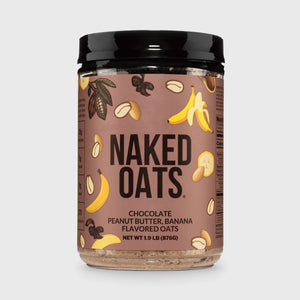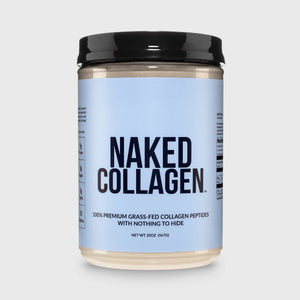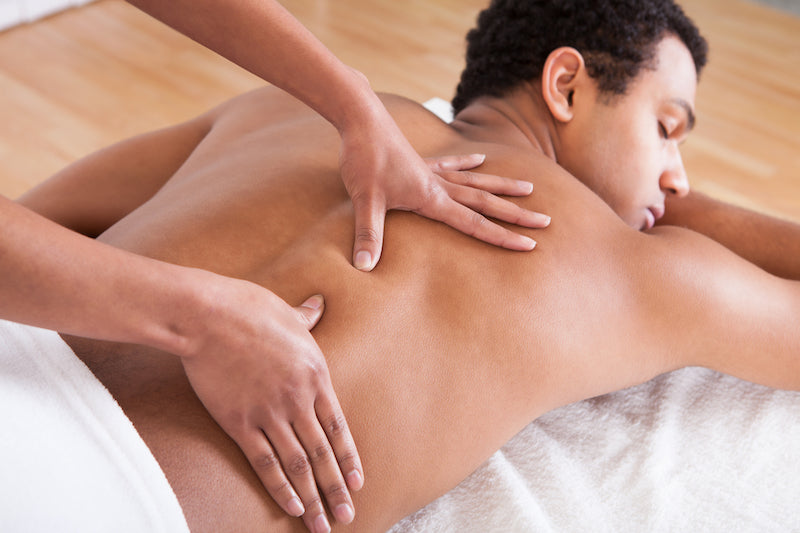
Recovery is the most commonly neglected part of a successful workout regime.
If you don’t give your body what it needs to recover after a workout, you’ll never see the physical improvements you want. The recovery process is where real growth happens, whether it’s muscle growth, fat loss, or improved cardiovascular health.
There are two types of recovery you can do - active and passive recovery. While either one is better than nothing, active recovery offers the greatest benefit.
Read on and we’ll share all you need to know about active post-workout recovery, together with a few ideas you can take away and use.
What is Active vs Passive Recovery?
When you recover after a workout, whether it’s in between sets, or after your workout in general, you’ll be doing one of two types of recovery. Active recovery, or passive recovery.
The difference between active and passive recovery is clear and well-defined. Passive recovery is when you don’t do anything at all. It’s simply the absence of any kind of activity.
Passive recovery is still beneficial after a workout, as it gives your body the time it needs to rebuild and repair itself. However, it’s not as beneficial as the alternative - active recovery.
Active recovery means doing something physically active to recover after a workout.
It shouldn't be strenuous enough to cause any additional physical stress or fatigue. Done right, it should accelerate your overall recovery time, and provide some other nice benefits to your overall well-being.
In between workouts, you’re obviously going to be utilizing more passive recovery than active recovery. You can’t stay moving constantly throughout the day, and the body needs some time (such as sleep) to shut down and go into recovery mode.
But it’s best to do some form of active recovery at some point, either as a cool-down soon after your main workout, or in between workouts on your rest day.
Active Recovery Ideas

There are plenty of things you can do for active recovery, from light workouts to activities focused more specifically on recovery. Here are some ideas for you to take on board:
Stretching
Stretching is a great way to cool down and loosen up after a hard workout. It’s excellent for improving blood flow, flexibility and mobility. It’s also a great way to reset the sympathetic nervous system, which gets elevated during physical activity.
Unlike pre-workout stretches, post-workout stretching can be either dynamic or static stretching. While it’s generally something you’ll do directly after your workout, you could also do a full stretching session on your rest day to work on your mobility, as well as enhancing recovery.
Best after: cardio, weightlifting , endurance exercises
Light/Low-Impact Cardio
Light cardio is another activity you can do to promote recovery. The idea is not to do a full-on cardio workout in itself, but to get the body moving, at a leisurely pace, to enhance blood flow and circulation.
You want to ensure your post/between-workout cardio is light (at a slow/moderate pace), and low-impact. This means cardio that doesn’t put much strain on the joints.
Swimming and cycling are amazing forms of low-impact cardio. You could also throw in walking or very light jogging.
Best after: weightlifting, high-intensity training
Massage
A massage is a really powerful way to loosen up tense muscles and increase recovery between workouts.
If you ask any professional sportsperson what they do as part of their recovery routine, you can be quite sure they’ll mention massage. There’s not many better ways to get the blood flowing, particularly to the various muscle groups that are in recovery mode and need it most.
Best after: high-intensity training, weight lifting, heavy athletic training
Foam Roller
Foam rolling (aka myofascial release) offers similar benefits to massage and is much more readily available for most people.
You can either use a foam roller at the gym, or get one for yourself to keep at home, and use this on any sore muscle groups after working out, and on rest days.
When you use a foam roller, you massage and loosen up the connective tissues around your muscles, bones, and joints, which can help enhance circulation, improve range of motion and reduce inflammation.
Best after: high-intensity exercise, heavy athletic training
Sauna

The benefits of sauna are well-studied. Along with more general benefits, such as cardiovascular health, improved immunity, and stress reduction, sauna (and other forms of heat exposure) are great for recovery.
Best after: weight lifting, high-intensity training, heavy athletic training
Ice Bath/Cold Plunge
On the other end of the temperature scale, cold exposure, such as an ice bath or cold plunge, can be powerful for recovery.
Cold water immersion is great for reducing inflammation, reducing pain, and soreness from working out.
One thing to mention is that cold water immersion a few hours after strength training can interfere with hypertrophy (muscle growth). So it’s best not to do an ice bath right after weight lifting. But it’s great for rest days, or after high-intensity or endurance training.
Best after: endurance exercises, cardio, high-intensity exercise
Yoga
Much like stretching, yoga is an excellent way to loosen up and decompress after a workout.
Yoga is beneficial for flexibility and mobility, which can not only boost recovery but boost performance next time you go to the gym.
Best after: weight lifting, high-intensity training, cardio
Benefits of Active Recovery

Here are some of the key benefits you get from active recovery:
Improves Blood Flow
Many forms of active recovery enhance blood flow and circulation, which is key in the recovery process.
The muscles need a steady supply of oxygen and minerals to help them rebuild and repair, which are delivered via the blood. The better and more freely blood flows around the body, the faster you’ll be able to recover.
Great for Mobility
By doing active recoveries, such as cardio, yoga, or stretching, you not only speed up recovery but also improve mobility at the same time, loosening up the muscles and joints.
This can relieve inflammation and soreness, but it also means you’ll be able to achieve a wider range of motion when you work out again and feel less post-workout soreness.
Boosting Metabolism
Active recovery, as opposed to passive, keeps the body moving and stimulates metabolism.
This is really important if your goal is fat loss or weight loss, as it keeps the body burning calories for long after the end of your main workout.
Beneficial for Mood and Stress Relief

Most forms of active recovery are also excellent stress relievers.
Light cardio, yoga, stretching, massage, heat exposure and cold exposure all have proven benefits for mood, helping induce a state of calm and relaxation.
Better Sleep
As an extension of the mental health benefits, you’re more likely to get better sleep if you engage in some kind of active wind-down session after your workout, due to reduced physical and mental stress throughout the day.
Breaks up the Monotony of Your Everyday Routine
Whatever you do to work out, the most important thing is that you do it consistently.
It doesn’t matter if you figure out the perfect alternating push-pull rotation to hit every muscle group, if you get bored of it and eventually stop going.
Yet it’s hard to avoid feeling this from your regular workout.
Active recovery sessions provide something different.
A light treadmill session after deadlifts, or a massage after a HIIT workout means you’re not doing the same old thing every time, and can help you keep the motivation you need to work out consistently.
Final Thoughts

If you want to reach peak performance and get the absolute most out of your workouts, recovery is key.
You should always consider your workout routine in two parts. The activity itself, and then what you do to recover.
Doing some form of active recovery, whether it’s straight after working out, on rest days, or both, will reduce soreness in between workouts, and help you get back to 100% faster.
Pair your active recovery sessions with a supplement like our recovery mushroom supplement for even better results.
Naked Recovery’s formula, featuring natural ingredients such as adaptogenic mushrooms, tart cherry juice, and lemon balm, help reduce physical and mental stress.
In conjunction with some light cardio, heat or cold exposure, massage or stretching, you’ll find yourself sleeping easier and longer, recovering faster, and seeing a bigger gain in performance as a result of your recovery process.













